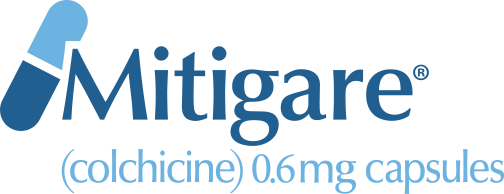
Picture this: You’re sound asleep in bed. A few hours ago, you came home from a nice evening out where you had shrimp cocktail, a steak and a glass of wine. All of a sudden, you wake up feeling as if your foot is on fire. And if the burning wasn’t bad enough, your foot feels like it’s getting crushed, too. Just the weight of the sheet on it feels like a pile of bricks. You yank back the bedclothes to find that your big toe is red and swollen. You’re feeling pain like you’ve never felt before, and you have no idea what caused it.
If this scenario sounds familiar, you may have experienced a gout flare. Read on to learn more about gout and its most common symptoms in adults.
Understanding gout
Gout is a form of inflammatory arthritis that affects about 8 million Americans—about twice as many men as women.1 It’s caused by a buildup of uric acid in the bloodstream, where it eventually causes sharp, needle-shaped urate crystals to form in the joints.2 These crystals can sometimes cause intense pain, inflammation and swelling.2
Symptoms of gout
Gout symptoms in adults often occur at night, and almost always come on suddenly.2 They include2:
- Intense joint pain—Although it can affect any joint, gout typically appears first in the joint at the base of the big toe. It can also affect the ankles, knees, elbows, wrists and fingers. The first four to 12 hours of pain are generally the worst—after that, the pain tends to fade somewhat.
- Lingering discomfort—Some joint discomfort may linger for a few days to a few weeks after the worst of the pain is over. However, later attacks are likely to last longer and impact more joints.
- Inflammation and redness—The affected joint or joints may become swollen, tender, warm and red.
- Limited range of motion—As your gout gets worse, you may not be able to move your joints as easily as you once did.
Talk with your doctor
If you have had an episode like the one described above and suspect you may be experiencing gout flares, talk with your doctor. Your doctor will be able to offer treatment options that best meet your individual needs and help you prevent future gout flares. You may want to download and complete the Gout Flare Questionnaire (from Resources for Patients) before your appointment.
NOTE: This article was not written by a medical professional and is not intended to substitute for the guidance of a physician. These are not Hikma’s recommendations for gout flare prevention, but rather facts and data collected from various reliable medical sources. For a full list of resources and their attributing links, see below.
